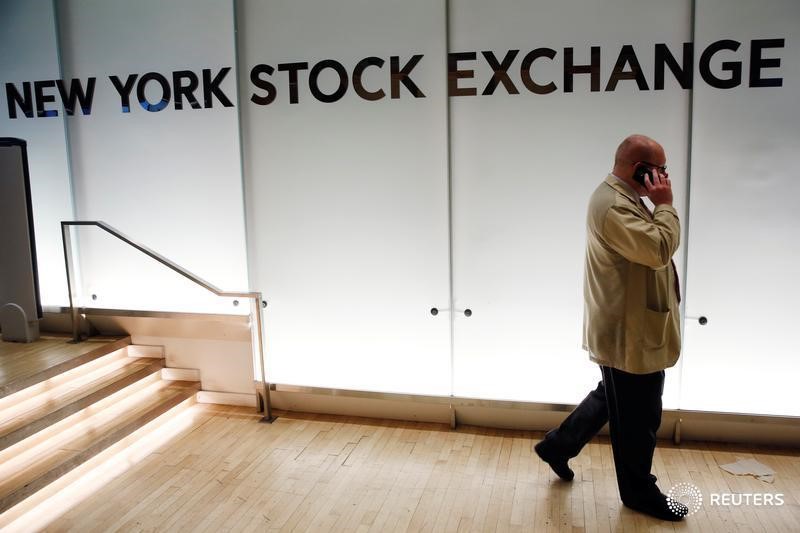Investing.com - Here are the top five things you need to know in financial markets on Monday, September 10:
1. Trade tensions remain in focus
Uncertainty surrounding continuing trade tensions continue to dominate markets as U.S. trade representative Robert Lighthizer meets up with European Union officials in Brussels on Monday.
This is the first high profile meeting since European Commission President Jean-Claude Juncker and U.S. President Donald Trump reached an agreement in July to discuss non-auto industrial tariffs, liquefied natural gas and soybeans.
German newspaper Handelsblatt reported that EU Trade Commissioner Cecilia Malmstrom plans to stay away from sensitive issues like autos or agriculture and focus on less aggressive issues such as U.S. beef exports or European technical standards.
The meeting comes as trade tensions between the U.S. and China continue to escalate. Although the recent $200 billion tariffs on Chinese goods has yet to be implemented, Trump warned Friday that he was prepared to add an additional $267 billion.
“The $200 billion we're talking about could take place very soon, depending on what happens with them,” Trump said. “I hate to say this, but behind that, there's another $267 billion ready to go on short notice if I want.”
The Chinese foreign ministry promised Monday to respond if the U.S. takes any new steps on trade.
Meanwhile, Japanese Prime Minister Shinzo Abe pledged Monday to work for free trade in negotiations with the U.S. “Tit-for-tat trade sanctions don’t benefit any country,” Abe told a gathering of lawmakers from the ruling Liberal Democratic Party on Monday.
The remarks came in his first policy speech since Trump hinted last week that he was adding Japan to the list of tariff targets.
2. Global stocks face longest losing streak in 2 years
World shares were flirting with their longest run of declines since early 2016 on Monday, hit by rising anxiety about the U.S.-China trade war and another interest rate increase by the Federal Reserve later this month.
Shares in Asia closed mixed on Monday, though China’s Shanghai Composite felt the tension, leading decliners with losses of more than 1%.
European stocks registered slight gains as the financial sector helped shares rise while the meeting between U.S. and European trade negotiators gave some hope that trade tension would escalate.
U.S. futures pointed to a higher open, recovering after the Nasdaq closed down last week for four straight sessions in its worst September start since 2008. At 6:01 AM ET (10:01 GMT), the blue-chip Dow futures gained 70 points, or 0.27%, S&P 500 futures rose 9 points, or 0.30%, but the Nasdaq 100 futures traded up 36 points, or 0.48%.
3. Dollar slips as Fed policy decision nears
At 6:04 AM ET (10:04 GMT), the U.S. dollar index, which measures the greenback’s strength against a trade-weighted basket of six major currencies, fell 0.09% at 95.29.
The greenback dipped against major rivals on Monday, as investors pocketed some profits from last week’s upbeat jobs report which pushed the dollar index back above the 95 handle.
Friday’s employment report cemented expectations for the Federal Reserve to move ahead with a quarter-point hike in interest rates at the September 25-26 meeting.
Odds have also increased for an additional hike in December, settling at 80% compared to around 70% ahead of last week’s release.
Over the weekend, Boston Fed president Eric Rosengren indicated that the U.S. central bank does not need to move faster than the current gradual pace, which has translated into roughly one rate hike per quarter, with the next expected later this month. That steady pace is a luxury gained by starting early, he said, skirting the need to move more quickly and catch up with a tightening economy.
4. Oil prices rise as U.S. drilling activity eases
Oil prices climbed on Monday as U.S. energy firms cut output from some rigs last week and the supply is expected to tighten as Washington’s sanctions against Iran take effect in November.
U.S. crude oil futures rose 0.55% to $68.12 at 6:07 AM ET (10:07 GMT), while Brent oil traded up 0.65% to $77.33.
U.S. drillers cut out two rigs last week, bringing the total to 860, according to energy services company Baker Hughes. Reports showed that the rig count in the U.S. has stagnated since May.
U.S. sanctions against Iran, the world’s fifth largest oil exporter, will take effect in November. Energy consultancy FGE said various Iran customers including India, Japan and South Korea have been cutting back on Iran crude purchases.
5. Emerging markets policy decisions in focus
Central banks in Turkey and Russia will make decisions on monetary policy this week, with markets on watch to see how the two countries’ central banks will handle their respectively weak currencies.
The Turkish economy grew 5.2% year-on-year in the second quarter, official data showed on Monday, in what is expected to be the last solid growth data before an expected second-half slowdown as Turkey grapples with a currency crisis. The data failed to boost the Turkish lira which has fallen nearly 30% against the greenback during the third quarter.
The Russian ruble weakened beyond 70 versus the dollar for the first time since March 2016 on Monday, remaining under pressure from concerns and uncertainty about U.S. sanctions.
Turkey's central bank will announce its decision on interest rates on Thursday, while the governor its Russian counterpart, Elvira Nabiullina, has said that the two main options were to either hold or raise rates on Friday.
